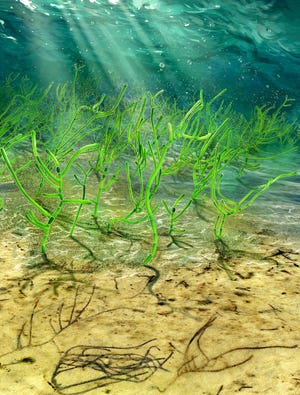@WFS,World Fossil Society,Riffin T Sajeev,Russel T Sajeev

A microscopic fossil discovered by Virginia Tech researchers may be key to understanding how modern plants evolved into their current form.
At around 1 billion years old, the seaweed microfossil — a type of algae known as Proterocladus antiquus — is the oldest green seaweed known to man. The findings were published Monday in Nature Ecology and Evolution.
The P. antiquus fossil, which is about the size of a flea, was discovered by Virginia Tech post-doctorate researcher Qing Tang on a rock in a dry area of northern China that was previously ocean.
He took the rock to his advisor, geosciences professor Shuhai Xiao. After inspecting their discovery, they found the microfossil on an electronic microscope and agreed that the finding was significant.
Prior to Xiao and Tang’s discovery, the oldest green seaweeds were found in a slab of rock estimated at around 800 million years old.
“These fossils are found in mudstones and fine-grained silty shales,” said Phoebe A. Cohen, an associate professor of geosciences at Williams College. “Think mud that has hardened and turned into rock.”
After the organism died, it descended onto the seafloor — where it was covered and pressed down by mud, she explained. It was especially well-preserved because the sediment it was covered in had little oxygen.

Many scientists theorize plants on land evolved from green seaweeds, which moved out of the ocean and into freshwater and then later adapted to the dry conditions on land. Xiao said the study’s findings strongly support this theory.
“These fossils are related to the ancestors of all the modern land plants we see today,” said Xiao in a statement. Land plants, he added, did not evolve until about 450 million years ago.
@WFS,World Fossil Society,Riffin T Sajeev,Russel T Sajeev
Source: Article by Joshua Bote, @USA today



 March 2nd, 2020
March 2nd, 2020  Riffin
Riffin  Posted in
Posted in  Tags:
Tags: 